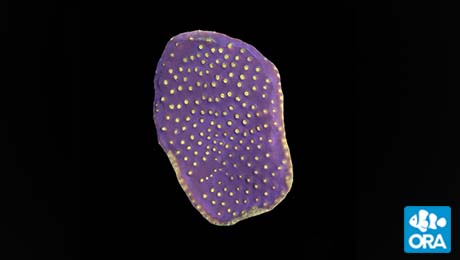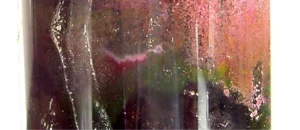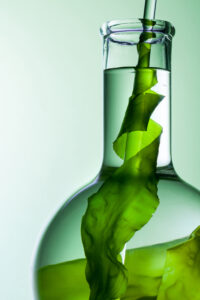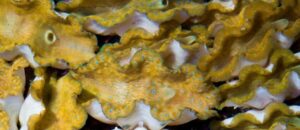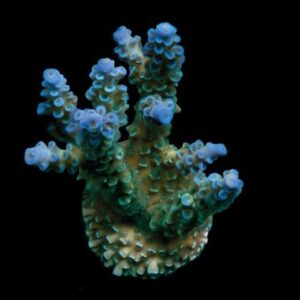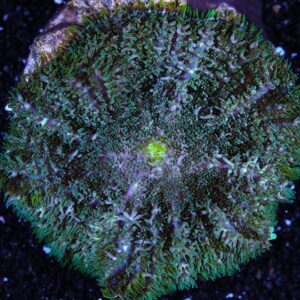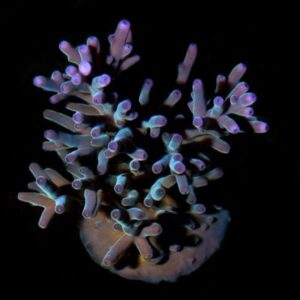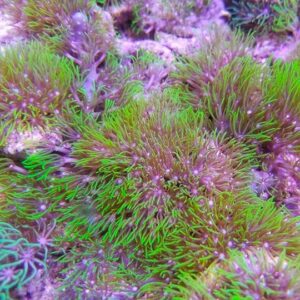Description
Scroll corals are found in the Indo-Pacific and are mostly collected around Australia and Indonesia. The scroll corals sold here are aquacultured by ORA. These corals are grown in aquariums instead of being collected from the ocean, which comes with benefits that we will discuss later.
Scroll corals, or Turbinaria, are stony corals that are similar to cyphastrea in that they are not clearly an “LPS” or “SPS” coral. In terms of growth pattern and appearance, this coral is similar to chalice coral. It often has a plating growth form with the polyps looking like “eyes” like with a chalice coral. The difference is that the plates can sort of swirl closely together depending on the water movement, giving large colonies an almost floral appearance. Sometimes the plates can be more vertical or more horizontal. It depends on the lighting and flow.
This is not a coral you typically see in an aquariums store, but don’t let that intimidate you. Scroll corals aren’t necessarily easy or beginner friendly, but they aren’t particularly difficult either. In case you are unfamiliar with this coral or keeping stony corals in general, let’s go over the basic care requirements.
Scroll corals prefer moderate to high light. It is usually best to place them under moderate lighting. They may show better coloration under higher light, but it’s not a must. When you add this coral to your aquarium, make sure you acclimate it to whatever light you decide to give it, especially higher light. Do this by starting the coral in lower light and gradually moving it into higher light. This greatly reduces the risk of bleaching.
Turbinaria enjoy lots of water flow. It doesn’t have to be anything crazy, but moderate to strong water flow is preferred. The important thing is that the coral is kept free of detritus, as settling waste can cause die-off. At the same time, it is important that the flow is not so strong that the coral is pushed off the rock.
Because this is a stony coral, it requires elevated and stable levels of calcium, alkalinity, and magnesium. The topic of base elements can be several articles on its own, but let’s go over the basic. Stony corals use ions in the water to create their calcium structures. When this happens, the base elements are consumed, lowering the levels. To maintain consistent levels, hobbyists use calcium reactors, kalkwasser, or dosing. It is crucial that the levels stay stable, as large fluctuations can be detrimental.
As for nutrient levels, keep the nitrates at 1-5 ppm and the phosphates as close to 0.01 ppm as possible but not 0. Keep the temperature between 72-78 degrees Fahrenheit and stable.
Lastly, let’s talk about feeding. How responsive scroll corals are to feeding greatly depends on the individual coral and the kind of food. Corals with smaller polyps typically respond better to foods with smaller particle sizes. You may have to experiment to find what works best. You can’t go wrong with simply dosing your aquarium with live phytoplankton and amino acids. However, this coral contains photosynthetic zooxanthellae, so feeding is not required.
Care requirements
Purchase Size: 1 – 2″
Placement: Bottom to middle. The large plating formation of this coral may shade corals below, so avoid placing it above other corals.
Lighting: Medium to high.
Flow: Moderate to strong.
Parameters: 72-78° F, pH 8.1-8.4, salinity 32-35 ppt
Calcium: 350-450 ppm
Alkalinity: 8-12 dKH
Magnesium: 1,250-1,350 ppm
More Information
Aquacultured corals such as these scroll corals are better adapted for aquarium life than corals collected from the ocean. they are also far less likely to carry pests and disease, but you should still dip and/or quarantine them to be safe. On top of all that, these corals or more sustainable and environmentally friendly.

